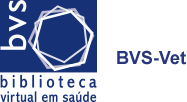The effects of feeding graded levels of whole cottonseed on semen characteristics and testicular profiles of Red Sokoto Bucks
Itodo, Joy IyojoIbrahim, Rekwot PeterRwuaan, Joseph SankeyAluwong, TangaShiradiyi, Bugau JohnOwoicho, Abah KennethAzubuike, Ubah SimonAgbi, Kuje Althea
The present work evaluated the effects of feeding graded levels of whole cottonseed on reproductive parameters of Red Sokoto bucks. Twenty Red Sokoto bucks were used for the experiment. After a 14-day pre-treatment period, bucks were assigned for 90 days to one of four isonitrogeneous treatments: control (diet A); 0 mg kg-1of total gossypol, (diet B); 15% mg kg-1of total gossypol, (diet C); 30% mg kg-1of total gossypol and (diet D); 45% mg kg-1of total gossypol.The mean percentage sperm gross motility was significantly (p 0.05)different among treatment groups. Semen colour of the bucks in the control group was majorly creamy, in group C (30% WCS) and B (15% WCS) creamy to milky and group D (45% WCS) colourless. The mean semen volume was significantly (p < 0.05) higher in groupsC and A compared to group D (45% WCS) at days 60, 75 and 90. The mean semen concentration was significantly (p < 0.05) lower in group D (45% WCS) when compared to group A (control) at days 30, 45, 60, 75 and 90. Group A (control) bucks had significantly (p < 0.05) higher percentage live sperm compared to those in group D (45% WCS) at days 45, 60, 75 and 90. Mean Sperm morphological abnormalities including detached head, free tail curved tail and midpiece droplets were significantly (p < 0.05) higher in group D (45%) than in group A (Control) at day 15 (for free tails) and day 90 (for all). Testicular and epididymal sperm reserves were higher in animals supplemented with up to 30% whole cottonseed.In conclusion, feeding bucks above 30% WCS resulted in more deleterious effects on the semen characteristics and testicular profile.
Texto completo